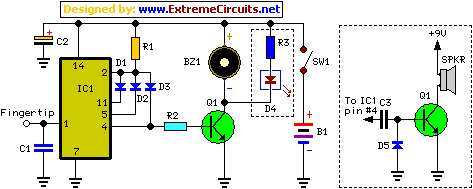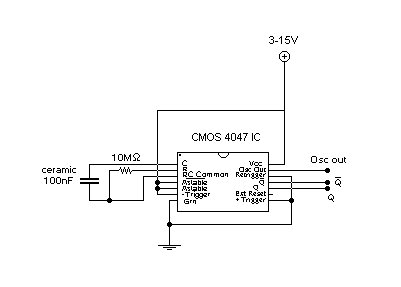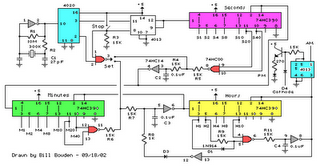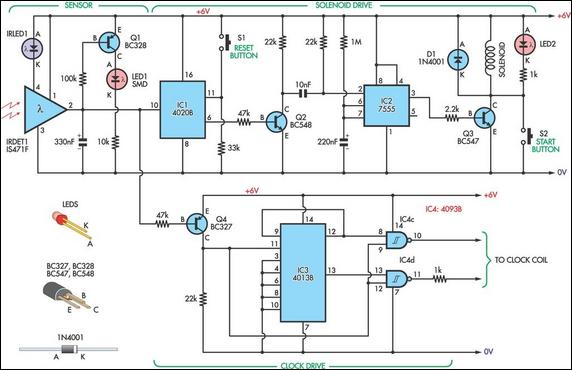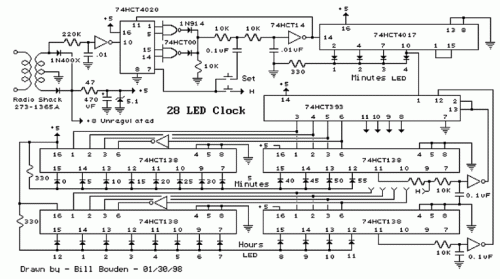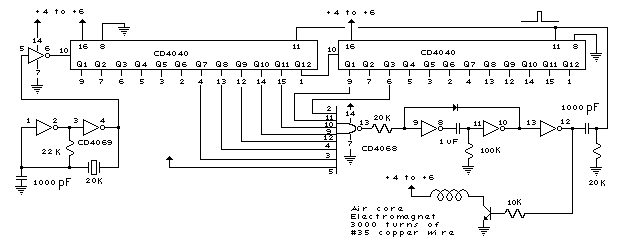
binary clock
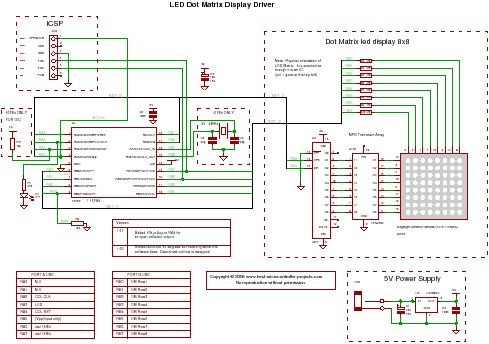
How to create a binary clock utilizing a PIC microcontroller with multiplexing to control an LED matrix.
To design a binary clock using a PIC microcontroller, the circuit will primarily consist of the microcontroller, an LED matrix, and multiplexing circuitry. The PIC microcontroller will serve as the central processing unit, responsible for generating the binary time signals and controlling the display.
The LED matrix will be arranged in a grid format, typically 8x8 or 5x7, where each LED represents a binary digit (bit) of the time. The microcontroller will output signals to the LED matrix through a set of GPIO pins. Multiplexing is employed to minimize the number of pins required for driving the matrix. In this configuration, only a subset of the LEDs is activated at any given time, cycling through the rows or columns rapidly enough to create the illusion of a fully lit display.
The binary clock will represent time in hours, minutes, and seconds using binary-coded decimal (BCD) format. Each segment of time will be displayed in binary form on the LED matrix, with specific bits lighting up to indicate the current time. The microcontroller will need to keep track of the time using an internal timer or an external real-time clock (RTC) module to ensure accurate timekeeping.
The circuit will also require a power supply, typically 5V, to drive the microcontroller and the LED matrix. Additional components may include resistors for current limiting to the LEDs, and possibly capacitors for power stabilization. The program code for the PIC microcontroller will include routines for reading the time, converting it to binary, and controlling the multiplexing of the LED matrix.
This design offers an engaging and visually appealing way to display time, while also providing an opportunity to learn about binary numbers, microcontroller programming, and circuit design.How to make a binary clock using a PIC microcontroller using multiplexing to drive an LED matrix.. 🔗 External reference
To design a binary clock using a PIC microcontroller, the circuit will primarily consist of the microcontroller, an LED matrix, and multiplexing circuitry. The PIC microcontroller will serve as the central processing unit, responsible for generating the binary time signals and controlling the display.
The LED matrix will be arranged in a grid format, typically 8x8 or 5x7, where each LED represents a binary digit (bit) of the time. The microcontroller will output signals to the LED matrix through a set of GPIO pins. Multiplexing is employed to minimize the number of pins required for driving the matrix. In this configuration, only a subset of the LEDs is activated at any given time, cycling through the rows or columns rapidly enough to create the illusion of a fully lit display.
The binary clock will represent time in hours, minutes, and seconds using binary-coded decimal (BCD) format. Each segment of time will be displayed in binary form on the LED matrix, with specific bits lighting up to indicate the current time. The microcontroller will need to keep track of the time using an internal timer or an external real-time clock (RTC) module to ensure accurate timekeeping.
The circuit will also require a power supply, typically 5V, to drive the microcontroller and the LED matrix. Additional components may include resistors for current limiting to the LEDs, and possibly capacitors for power stabilization. The program code for the PIC microcontroller will include routines for reading the time, converting it to binary, and controlling the multiplexing of the LED matrix.
This design offers an engaging and visually appealing way to display time, while also providing an opportunity to learn about binary numbers, microcontroller programming, and circuit design.How to make a binary clock using a PIC microcontroller using multiplexing to drive an LED matrix.. 🔗 External reference
Warning: include(partials/cookie-banner.php): Failed to open stream: Permission denied in /var/www/html/nextgr/view-circuit.php on line 713
Warning: include(): Failed opening 'partials/cookie-banner.php' for inclusion (include_path='.:/usr/share/php') in /var/www/html/nextgr/view-circuit.php on line 713
